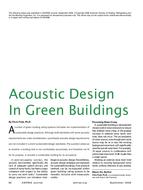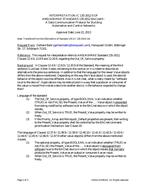Click here to purchase
Building occupants’ perception of their ability to control the temperature of their offices has a strong influence on their satisfaction with the thermal environment. Many offices in modern commercial buildings offer thermostats for room level control, however, the complex control logic can act as a barrier for users to interact effectively with the heating, ventilation, and air-conditioning (HVAC) control system. While surveys have shown that perceived control in modern offices is low, no known studies of offices have measured and analyzed indoor conditions, HVAC performance, and thermostat interactions for the purpose of understanding building interface usability. In this study, 25 near-identical offices in a university academic building were studied over a three-month period during the heating season by using the sensor data from the building automation system. Following a review of the programming logic, the ability of the HVAC system to maintain the thermostat setpoints and the response time to setpoint changes was investigated. On average, the rooms where within ±0.5°C (±0.9°F) for 54% of occupied hours (as defined by BAS schedule), and took 83 min/°C (46 min/°F) and 53 min/°C (29 min/°F) to respond to an increase or decrease to the setpoints respectively. It was found that the building’s thermal performance varied significantly by factors such as conditions in neighboring offices, outdoor environmental conditions, and building automation features. The influence of such factors on the system’s performance is likely not understood by occupants, and when coupled with overall slow response times to setpoint adjustments, this may reduce their perceived control over their thermal environment.
Citation: 2020 Virtual Conference Papers
Product Details
- Published:
- 2020
- Number of Pages:
- 9
- Units of Measure:
- Dual
- File Size:
- 1 file , 910 KB
- Product Code(s):
- D-VC-20-C021


